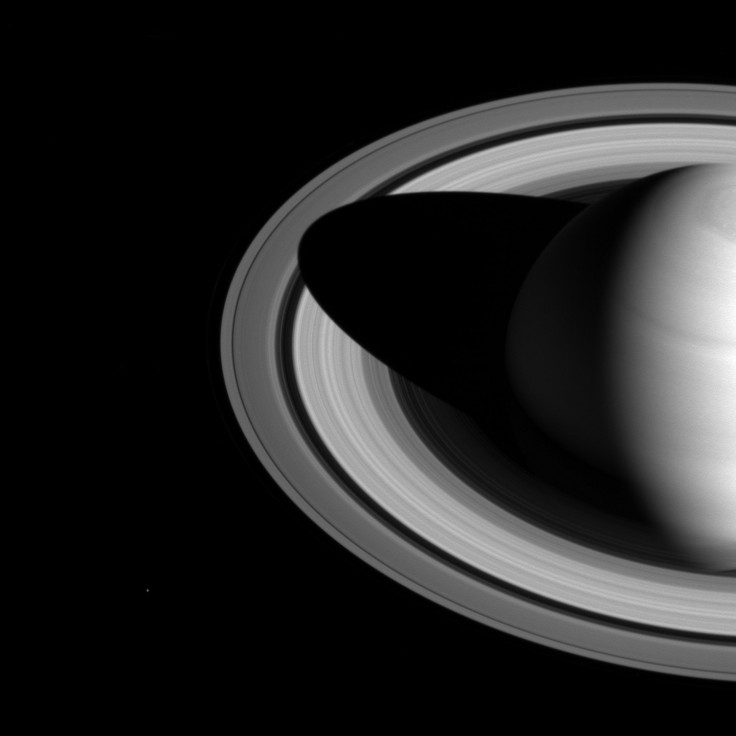Saturn Mystery: Why 5 Unusual 'Mini-Moons' In Planet's Rings Are Different Colors And Shapes

Saturn's "ring moons," five mini-moons nestled in or near the gas planet's iconic rings, have baffled astronomers for years because of their varying shapes and colors. But new data from NASA's Cassini spacecraft may have just revealed the secret behind the ring moons' diversity.
The moons embedded within or located near Saturn's rings — Pan, Daphnis, Atlas, Pandora and Epimetheus — were found to have some strange features. Pan and Atlas, for example, resemble flying saucers in shape. Saturn's moons also sometimes vary in color from adjacent rings, and scientists have been unable to pinpoint the reason.
Awww mini-moons!🌛 So cute - and so intriguing. @CassiniSaturn data reveals that five tiny moons nestled in Saturn's rings are covered with icy particles blasted out of Saturn's larger moon, Enceladus. https://t.co/kPELf50ZUR pic.twitter.com/64P2kVDtZ5
— NASA Moon (@NASAMoon) March 29, 2019
But in a study published in the journal Science on March 28, researchers found that the mini-moons' surfaces are covered with material coming from two main sources: Saturn's rings and the ringed planet's larger moon, Enceladus. The mysterious red material in the rings and icy particles spewed by Enceladus may have given them their color, the research found.
Study lead author Bonnie Buratti of NASA's Jet Propulsion Laboratory in Pasadena, California and over 30 co-authors analyzed data collected by six of Cassini's instruments before it died a fiery death by plunging into Saturn's thick atmosphere in 2017, according to NASA's website.
"This mission was not supposed to happen," Buratti told Space.com. "Cassini was only supposed to look at Saturn and its rings and its magnetosphere during its grand finale, but we noticed that it would come close to Saturn's ring moons, and we argued we wanted to look at them. So, our findings here are like a bow on top of the Cassini mission."
According to the research, the mini-moons' position with respect to Saturn's rings affected their appearance. Pan, the closest to Saturn among the ring moons, is the reddest, while Epimetheus, the farthest out, is the bluest.
This discovery seemed to point to two competing factors when it comes to the ring moons' appearance. Those closest to the main rings are covered by a red material consisting of a mix of iron or organic compounds. Meanwhile, the moons located further away from the rings receive a greater amount of ice particles or water vapor from volcanic plumes from Enceladus.
The study also revealed that Saturn's ring moons had low densities, suggesting that they were formed from ring material accumulating onto dense cores. The material could sometimes accrete onto the equators of these natural satellites, and this may be the reason behind Pan and Atlas' bizarre flying saucer appearances.
"The rings and these moons are really the same kind of object — the rings are made of small particles, and these moons are the biggest versions of these particles," Buratti said. "These moons continue to accumulate small particles, explaining the weird skirt-like features around their equators."
© Copyright IBTimes 2024. All rights reserved.





















